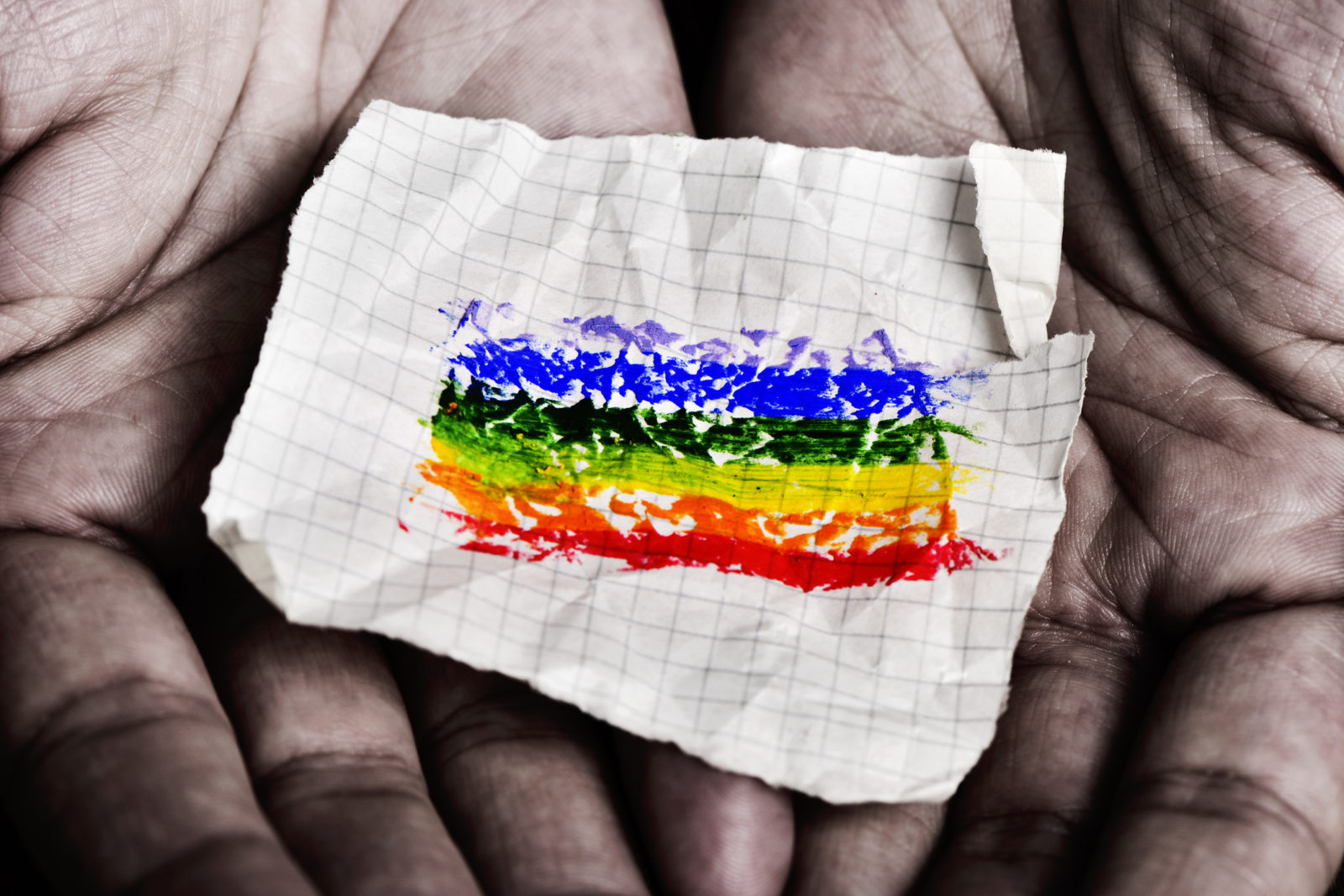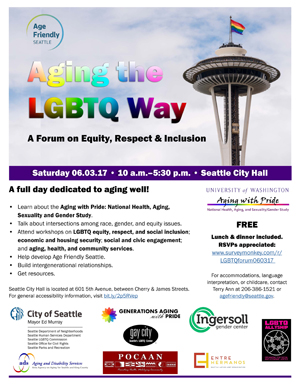The Silver Rainbow: Challenges LGBTQ Seniors Face

The historic Supreme Court decision in June 2015 legalizing marriage equality in all 50 states enables LGBTQ life partners and those in long-term relationships to access the benefits of being legally married. However, Houston Mayor Annise Parker—who is an out lesbian—wrote in the Houston Chronicle that, for many LGBT seniors, the U.S. Supreme Court’s ruling in favor of same-sex marriage comes too late. She says, “For many LGBT Texans who cared for and nurtured their life partner in the final years of their life, marriage equality will be too late. They never had the benefit of access to their partner’s Social Security benefits or employer-sponsored pension. They faced the stunning realization that not only did they lose the love of their life; they will eventually lose the home they shared that life in, too, because of financial inequality and equal access.”
Full marriage equality in all states, coming on the heels of the 2013 Windsor decision that removed barriers to the federal government recognizing same-sex marriages in the states where it was legal, has ushered in a whole new legal and financial landscape, though same-sex couples may need help to know how to request these or insure that they are listed on critical beneficiary documents. This is especially true for LGBTQ elders, as they often have less support networks and resources to rely on as they age than their heterosexual peers.
LGBTQ Seniors Have Fewer Resources
Fewer LGBTQ elders have children, many are estranged from immediate and extended family, fewer are in long-term relationships, and more are in poverty from a lifetime of employment discrimination. And for gay and bisexual men, many saw their generation of peers decimated by the AIDS epidemic, leaving those who survived even more alone. A summary of a recent study by SAGE found that “LGBT elders are four times less likely to be parents than older people in the country at large” and that “for LGBT older adults, a lifetime of employment discrimination and other factors has contributed to disproportionately high poverty rates.” A 2010 study found that “same-sex elder couples face higher poverty rates than their heterosexual peers; 9.1 percent and 4.9 percent among elder lesbian and gay couples, respectively, in contrast to 4.6 percent among elder heterosexual couples.” And for LGBTQ elders of color, the rates of poverty are higher.
With fewer resources and people who can assist them as they age, LGBTQ seniors may rely more on services for help, but there are unique challenges in doing so. For LGBTQ people now in their senior years, many more of their heterosexual peers hold negative attitudes about their identity, sexual orientation, or gender expression. Polls have consistently shown that people under age 30 are far more accepting in their beliefs than people over 60. As a result, senior programs, assisted living centers and nursing homes may have an overtly homo- or transphobic social environment. Without proactive steps by staff to interrupt and counteract social biases among patrons, an LGBTQ senior may be made to feel very unwelcome and have no one to turn to for assistance, increasing their isolation.
Senior Care Facilities Lack Basic LGBTQ Competency
In too many cases, staff at senior care facilities lack cultural competency, and openly show their disapproval of LGBTQ people who rely on their services, or even abuse them. Slightly less than half the states have laws that ban LGBTQ discrimination in public accommodations, housing, and employment. Given how involved the process of finding a care facility that is a good fit socially, medically, and financially for a particular individual, you can imagine how discouraging it is should that facility ask you to leave because you are LGBTQ—and this is not illegal in over half the country!
No wonder the numbers of LGBTQ seniors who are going back in the closet—back to hiding who they are, back to changing pronouns in conversations, back to calling their long-term life partners their “friend” instead of their spouse—are growing. And these seniors are the same people who witnessed and in many cases fought long and hard to be able to live out and proud of who they are. The travesty of the situation is agonizing.
The times are changing, but not as fast as the need is growing.
In a handful of cities there are efforts to establish senior centers specializing in LGBTQ social activities and support. New York City partnered with SAGE (the nonprofit Services and Advocacy for Gay, Lesbian, Bisexual and Transgender Elders) to open five such centers in 2015. In a few places there are LGBTQ retirement communities, such as FountainGrove Lodge in California and RainbowVision in New Mexico among others, though generally the costs of any retirement community can be prohibitive for a majority.
Many senior programs and services may not know if they are serving any LGBTQ elders, unless they both ask their clients and make their staff more knowledgeable and welcoming. Simply assuming that because you have had no complaint, means you must be meeting their needs is not adequate. LGBTQ elders have spent a lifetime being trained to hide who they are, and need active acceptance on the part of staff to develop the trust that helps them let down their guard. In many cases staff want to do their best for all clients, but lack information to understand the forms that social stigma and discrimination against LGBTQ individuals take.
Fortunately, there is growing scholarly research documenting details of LGBTQ aging, resulting in more FAQ guides that can help familiarize staff with the issues. SAGE, the Movement Advancement Project, Caring and Aging with Pride, and the National Resource Center on LGBT Aging all have great resources available online. The director of University of Washington’s Institute for Multigenerational Health, Karen I. Fredriksen-Goldsen, is among the leading researchers studying LGBTQ people and aging and has edited the groundbreaking anthology “Caregiving with Pride” (2007) that is used as a resource in an increasing number of training programs. She and the City of Seattle have partnered to create a new advocacy organization for LGBTQ seniors, “Generations Aging with Pride.”
Roles Senior Services Can Play
Given how fast the landscape of acceptance for LGBTQ people has changed in just the past five years, organizing an afternoon LGBTQ Rainbow information fair that partners with local LGBTQ organizations and senior service providers may be a useful place to start. Putting together such an event that travels to the senior centers in your city or service area will not only help staff familiarize themselves with the issues encountered by LGBTQ elders, it likely will result in staff meeting and hearing from those elders. As personal relationships are established, it will be easier to identify unmet needs that could be a great fit for senior service agencies to address. And paired with a healthy meal, group games, and light entertainment, such an event can provide important socializing and critical information for an elderly population that is growing daily as baby boomers reach their retirement years.
Contributor Randy Wiger coordinates Parks Commons and Arts in Parks for Seattle Parks and Recreation. Randy’s article originally appeared in Parks & Recreation, a monthly magazine published by the National Recreation and Park Association (August 1, 2015).
![Aging & Disability Services for Seattle & King County [logo]](https://www.agingkingcounty.org/wp-content/themes/sads/images/seattle-ads-logo.png)
